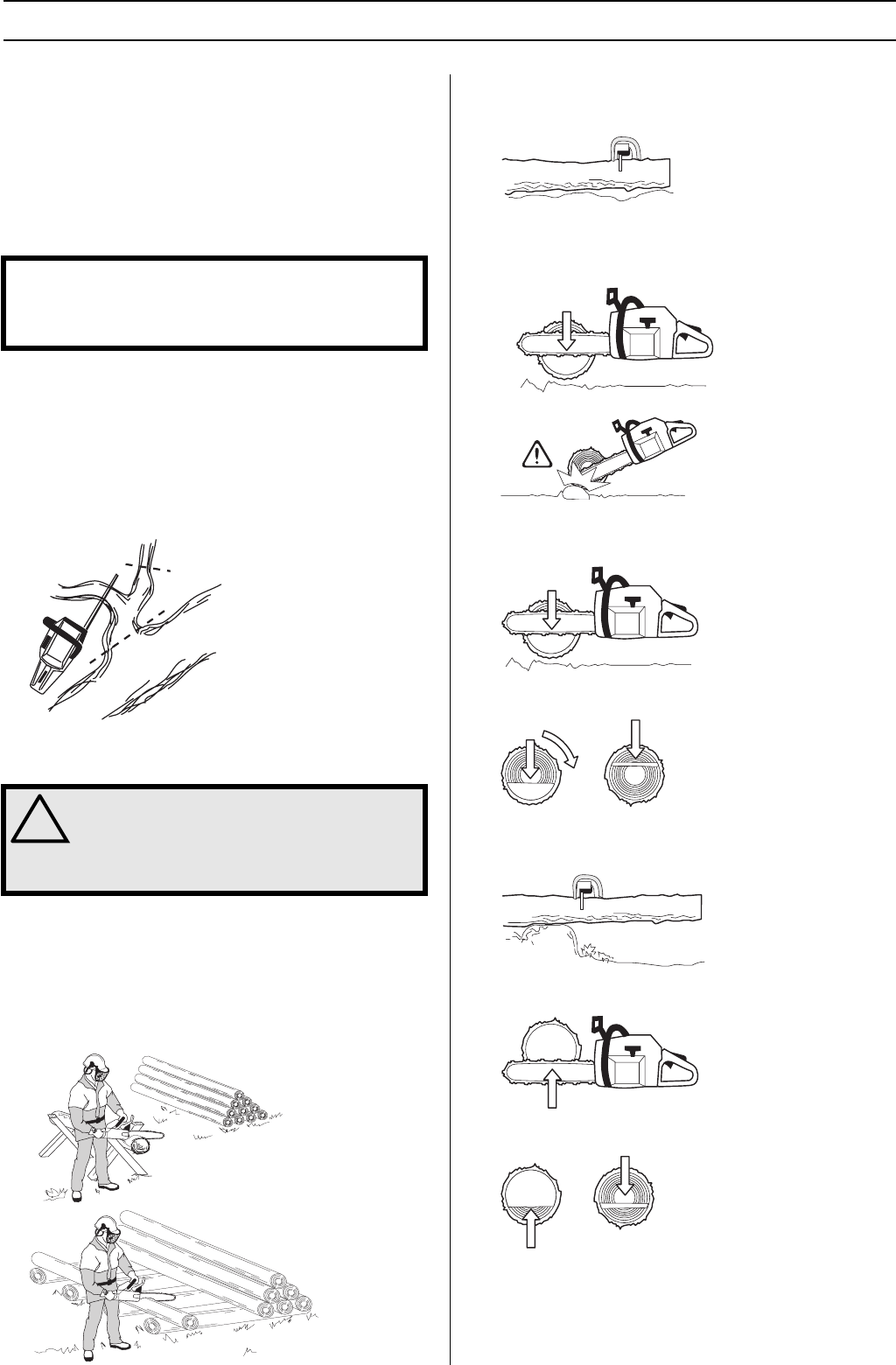
24 – English
WORKING TECHNIQUES
Two factors decide whether the chain will jam or the object
that you are cutting will split: the first is how the object is
supported before and after cutting, and the second is whether
it is in tension.
In most cases you can avoid these problems by cutting in two
stages; from the top and from the bottom. You need to support
the object so that it will not trap the chain or split during
cutting.
The following instructions describe how to handle the
common situations you are likely to encounter when using a
chain saw.
Limbing
When limbing thick branches you should use the same
approach as for cutting.
Cut difficult branches piece by piece.
Cutting
If you have a pile of logs, each log you attempt to cut should
be removed from the pile, placed on a saw horse or runners
and cut individually.
Remove the cut pieces from the cutting area. By leaving them
in the cutting area, you increase the risk for inadvertently
getting a kickback, as well as increasing the risk of losing your
balance while working.
The log is lying on the ground. There is little risk of the
chain jamming or the object splitting. However there is a risk
that the chain will touch the ground when you finish the cut.
Cut all the way through the log from above. Avoid letting the
chain touch the ground as you finish the cut. Maintain full
throttle but be prepared for what might happen.
If it is possible (can you turn the log?) stop cutting about 2/3
of the way through the log.
Turn the log and finish the cut from the opposite side.
The log is supported at one end. There is a high risk that it
will split.
Start by cutting from below (about 1/3 of the way through).
Finish by cutting from above so that the two cuts meet.
IMPORTANT! If the chain jams in the cut: stop the engine!
Don’t try to pull the chain saw free. If you do you may be
injured by the chain when the chain saw suddenly breaks
free. Use a lever to open up the cut and free the chain saw.
!
WARNING! Never attempt to cut logs while
they are in a pile or when a couple of logs
are lying together. Such procedures
drastically increase the risk of kickback
which can result in a serious or fatal injury.
1
2
3


















